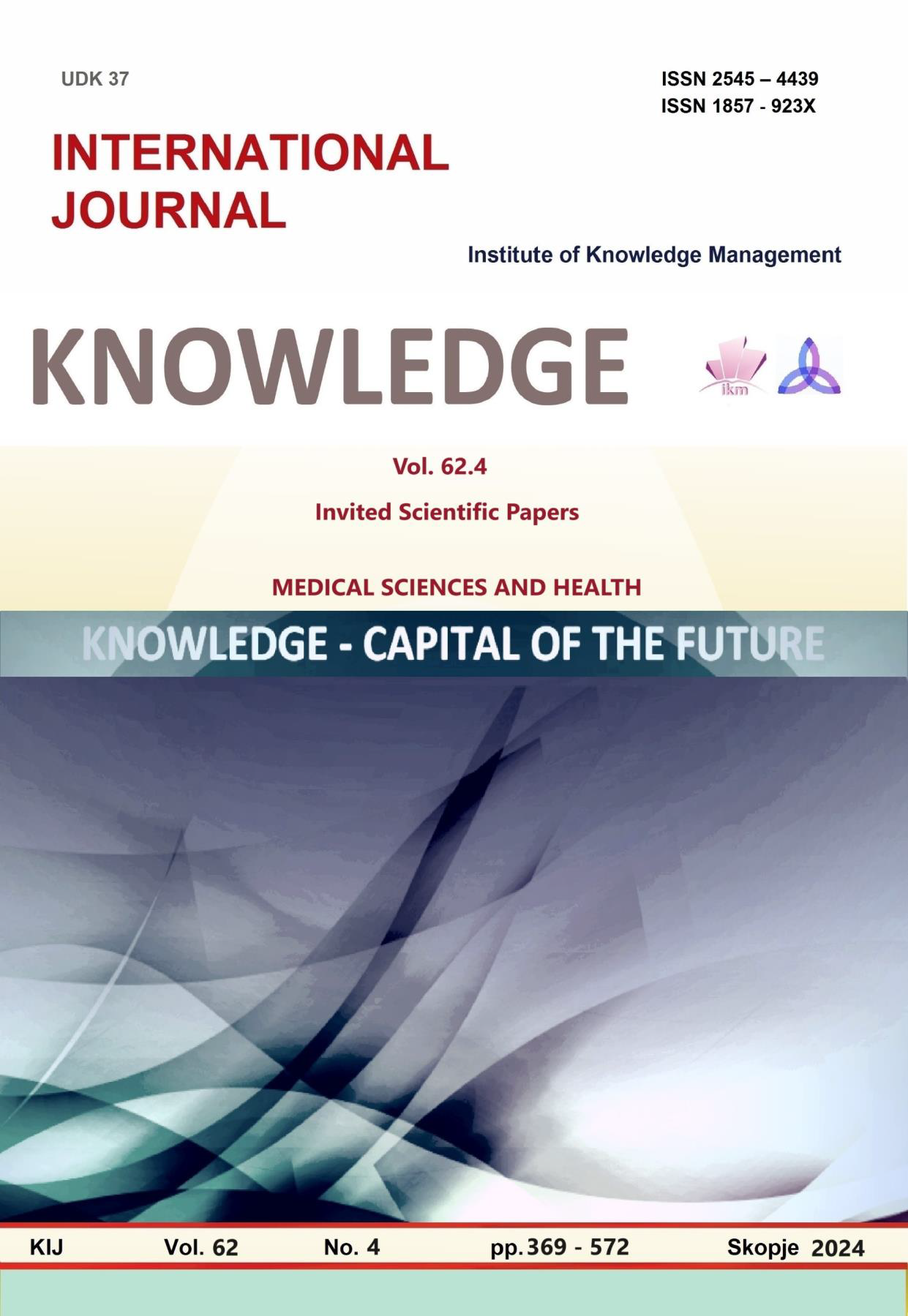ПРОЦЕНКА НА ВЛИЈАНИЕТО НА МАНДИБУЛАРНИТЕ ТРЕТИ МОЛАРИ НА ПОЈАВАТА НА ИНЦИЗАЛНА МАНДИБУЛАРНА ЗБИЕНОСТ
ASSESSMENT OF THE INFLUENCE OF MANDIBULAR THIRD MOLARS ON THE OCCURRENCE OF INCISAL MANDIBULAR CROWDING
Author(s): Fjolla Ajeti, Natasha Toseska SpasovaSubject(s): Health and medicine and law
Published by: Scientific Institute of Management and Knowledge
Keywords: Incisal mandibular crowding;third molars;Little's irregularity index;Ganss ratio;orthodontic study models;orthopantomographic images
Summary/Abstract: The influence of third molars on incisor crowding has long been discussed in the dental literature and has been a controversial topic for many years. Third molar is a tooth characterized by variability in the presence or absence in the oral cavity, time of its formation and calcification. Because incisal mandibular crowding coincides with the chronological time of eruption of third molars and appears to be a cause-and-effect relationship, prophylactic extraction of mandibular third molars appears to be a logical preventive measure for late mandibular crowding. Mandibular incisal crowding is described as the discrepancy between the mesiodistal widths of the four permanent incisors and the available space in the alveolar process. The aim of this research is to assess the potential influence of mandibular third molars on the development of lower incisor crowding through determination of retromolar eruption space and eruption level and of third molars. For the realization of our objectives examinations are performed on mandibular study plaster orthodontic models and orthopantomographic images of 13 individuals, aged between 12 and 22 years. The whole sample is divided into two groups based on the Little’s index of irregularity: group I-control group composed of patients with index 0 to 3 mm, and group II- study group composed of patients with index >3 mm. Calculations made for the third molar eruption space and depth were done on orthopantomograms. Assessment of the eruption space of the third mandibular molars was determined by: Determination of the Ganss ratio - as a ratio between the available space and the mesiodistal width of the third molars; Evaluation of the eruption level (eruption depth) of the mandibular third molars is determined as the depth of the third molars in relation to the adjacent second molars, according to Pell and Gregory, and is determined in three levels : level A (fully erupted), level B (partially erupted), level C (unerupted). The data obtained during the research were statistically processed using the SPSS software package, version 22.0 for Windows (SPSS, Chicago, IL, USA). A significant difference was determined between patients from the study and control groups in terms of dental crowding (t-test (11)=-4.679 p=0.0007). There was no significant difference between patients from the study and control groups in terms of Ganss ratio value(t-test (11)=-0.261 p=0.7989). The analysis indicated that in the examined group of patients with the index of irregularity > 3mm, none of the patients had eruption level A, and with eruption level B or C there were consistently 6 (75%) vs. 2 (25%) patients. In the control group, with an irregularity index of 0-3mm, there were 1 (20%) patients with eruption level A, and with eruption level B and C there was an equal proportion of patients, 2 each (40%). There was no significant association between the group to which the subjects belong and the level of eruption B and C (p=0.4061). The analysis of the interrelationship of tooth crowding with the Ganss ratio value indicated a non-significant linear positive correlation for Spearman Rank order correlations: R(13)=-0.125; p=0.683) - with the increase in dental crowding.The Ganss ratio value also increased insignificantly. The results of our research showed that mandibular third molars have no influence on the occurrence of incisal mandibular crowding.
Journal: Knowledge - International Journal
- Issue Year: 62/2024
- Issue No: 4
- Page Range: 427-433
- Page Count: 7
- Language: Macedonian

